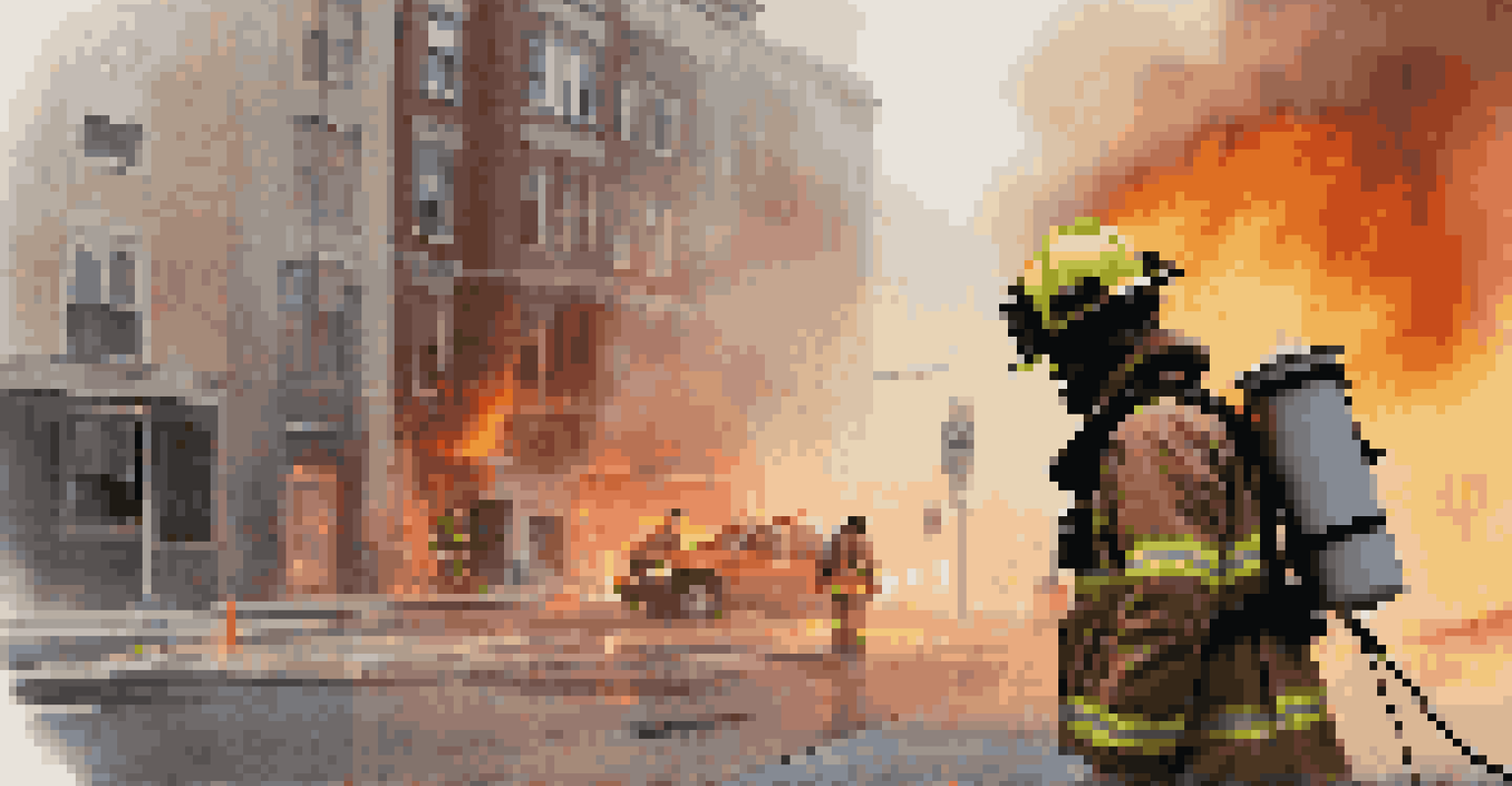Augmented Reality in Public Safety: Improving Community Safety

Understanding Augmented Reality and Its Impact
Augmented Reality (AR) blends digital information with the real world, enhancing our perception of our surroundings. Imagine walking down the street and receiving real-time alerts about nearby safety hazards or emergency situations. This innovative technology is not just for gaming; it has the potential to transform how we approach public safety.
Augmented reality is not just a tool for entertainment; it has the potential to reshape how we interact with the world and improve public safety.
By superimposing useful data onto our environment, AR can provide critical information to first responders and community members alike. For instance, an officer on the scene could see building layouts or access points highlighted through their AR glasses, allowing for more efficient rescue operations. This integration of technology into public safety creates a smarter, more informed response.
As communities become more interconnected, the role of AR in public safety will only grow. By harnessing the power of AR, we can create safer environments where citizens remain informed and engaged, ultimately leading to a more responsive public safety system.
Real-Time Data Visualization for Emergency Responders
One of the most significant advantages of AR in public safety is its ability to provide real-time data visualization. Imagine firefighters receiving a live feed of building layouts while responding to a blaze; this insight can be a game-changer. With AR, responders can access crucial information without the need for cumbersome paper maps or time-consuming briefings.

For example, AR can display the location of hydrants, gas lines, and potential hazards, allowing first responders to make informed decisions quickly. This technology not only enhances situational awareness but also increases the safety of both the responders and the public. When every second counts, having that information at their fingertips can save lives.
AR Enhances Public Safety Response
Augmented Reality improves situational awareness for first responders by providing real-time data visualization and critical information during emergencies.
Moreover, AR can facilitate better communication among different emergency services. By sharing a common AR platform, police, fire, and medical teams can collaborate more effectively, ensuring that everyone is on the same page during an emergency situation.
Community Engagement Through Augmented Reality
AR can also play a crucial role in community engagement, helping residents feel more connected and informed about public safety initiatives. Interactive AR applications can educate citizens about local safety resources, emergency procedures, and even neighborhood watch programs. This interaction fosters a sense of ownership and responsibility within the community.
The future of community engagement lies in technology that empowers residents to take active roles in their safety.
For instance, a neighborhood app that uses AR could allow residents to visualize safety zones, report hazards, or learn about local crime statistics. By making this information readily accessible, communities can work together to address safety concerns proactively. When people feel informed, they are more likely to participate in safety initiatives.
Additionally, AR can facilitate virtual town hall meetings where community members can explore important safety topics in an engaging way. By using AR to bring these discussions to life, communities can foster a collaborative environment where every voice is heard.
Training and Simulation for Enhanced Preparedness
Training is vital for public safety personnel, and AR provides innovative solutions to enhance preparedness. Through realistic simulations, emergency responders can practice their skills in controlled environments that mimic real-life situations. Imagine a police officer training in a virtual city, where every corner presents a new challenge.
These simulations can include various scenarios, from natural disasters to active shooter situations, allowing responders to build confidence and competence. By using AR, they can practice navigating complex situations without the risks associated with real-life training exercises. This not only enhances their skills but also helps to reduce training costs.
Community Engagement Through AR
AR fosters community involvement by educating residents about safety resources and encouraging proactive participation in public safety initiatives.
Furthermore, AR can provide immediate feedback during training, helping participants learn from their mistakes in real time. This interactive approach to learning ensures that first responders are more prepared to handle emergencies when they arise.
Crime Prevention Strategies Using Augmented Reality
AR can be an effective tool in crime prevention, allowing communities to visualize crime patterns and hotspots. By overlaying crime data onto maps of neighborhoods, residents can better understand where issues may arise and take action accordingly. This proactive approach empowers citizens to work together to improve their safety.
For example, a local police department might share an AR application that displays recent crime incidents in a user-friendly format. Residents can use this data to stay informed and adjust their behaviors or report suspicious activities. This collective awareness fosters a safer environment where everyone plays a role in crime prevention.
Moreover, AR can help in creating awareness campaigns that educate the community about crime prevention tactics. By using engaging visuals and interactive content, these campaigns can resonate with a broader audience, ultimately leading to a more vigilant and informed community.
Addressing Privacy Concerns in Augmented Reality
With the integration of AR into public safety, it's essential to address privacy concerns that may arise. As AR technology gathers data, citizens may worry about surveillance and the misuse of their information. Striking the right balance between safety and privacy is crucial for community acceptance of AR solutions.
To mitigate these concerns, transparency is key. Public safety agencies must communicate clearly with communities about how data is collected, used, and protected. Engaging with the community in discussions about privacy can help build trust and ensure that residents feel comfortable using AR applications.
Balancing Privacy and Safety in AR
Addressing privacy concerns is essential for the successful adoption of AR in public safety, requiring transparency and robust security measures.
Additionally, implementing robust security measures and adhering to privacy regulations can further reassure the public. By prioritizing privacy while leveraging the benefits of AR, communities can embrace technology that enhances safety without compromising individual rights.
The Future of Augmented Reality in Public Safety
As technology continues to evolve, the future of augmented reality in public safety looks promising. We can expect advancements that further integrate AR into everyday safety protocols, making it an invaluable resource for both responders and community members. The potential applications are vast, from crime prevention to emergency response enhancements.
Moreover, as AR technology becomes more accessible, we may see a rise in community-driven initiatives that utilize AR for safety purposes. Imagine neighborhoods creating their own AR applications tailored to their specific needs, fostering a sense of collaboration and community spirit. This democratization of technology can empower citizens to take charge of their safety.

Ultimately, the successful implementation of AR in public safety relies on collaboration between technology developers, public safety agencies, and communities. By working together, we can harness the power of augmented reality to create safer, more connected neighborhoods for everyone.